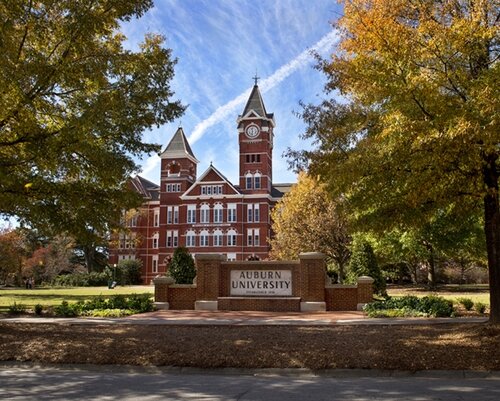Auburn University PhD gets Space Telescope grant to revive the search for sulfur in planetary formation
John Noonan, a postdoctoral researcher in the Bodewits research group in the Department of Physics, is the Principal Investigator of a $493,072 grant from the Association of Universities for Research in Astronomy, or AURA, to analyze over 1,500 observations of comets and to create an open-source tool to help answer the question of what happens to sulfur in the planetary formation process.
“In comet atmospheres sulfur emissions appear quite strong” said Noonan. “Yet, there are only six sulfur bearing molecules that have been detected in molecular clouds and only five seen in protoplanetary disks. So the big question is, where is all the sulfur in comets coming from?”
Noonan’s interest in cometary sulfur emissions was sparked by his previous work on the European Space Agency’s Rosetta mission to Comet 67P/Churyumov-Gerasimenko. During the mission, the team discovered a plethora of sulfur molecules and this led to Noonan’s focus on the ultraviolet spectroscopy of comets.
The Rosetta mission was unique as it intercepted and followed the comet for two and a half years, resulting in a large amount of data, unlike other missions that provide only snapshot observations or ground-based observations that are often millions of miles from the objects.
“In the late 1970s, researchers first observed sulfur emissions from comets,” Noonan said. “In 1998, two researchers created a software program for cometary sulfur analysis to properly treat some of the complex physics required to convert the emissions into a number of atoms, and thus trace the molecular source. However, the actual software program just does not exist any longer in any public-facing manner, making it difficult for new researchers to continue to apply their ground-breaking effort.”
The grant will allow Noonan and his team to restore the software program and run it on the entire ultraviolet comet catalog of 1,500 observations and 78 unique comets from the International Ultraviolet Explorer and the Hubble Space Telescope. “This research project will give an opportunity to re-create this software and run it on the entire ultraviolet comet catalog of about 1,500 observations and 78 unique comets,” he said. The software will be available to any scientist for research purposes.
“We have an amazing team,” Noonan said. “While I am the lead scientist on this project, we have a strong Auburn presence with two other postdoctoral researchers in the Department of Physics, Steven Bromley and Mohi Saki.”
The grant will also fund an undergraduate student at Auburn University and bring together collaborators from the Southwest Research Institute, the Applied Physics Laboratory at Johns Hopkins University, the University of Maryland, and California State University, San Bernardino. “Our goal is to build the software collaboratively and then to offer it as a self-contained Python package, making it as accessible as possible” Noonan added. The software could potentially be used to study sulfur distribution in any objects in the universe, not just comets.
Noonan holds a doctorate in planetary sciences from the Lunar and Planetary Laboratory at the University of Arizona and a bachelor’s degree in astrophysics and planetary sciences from the University of Colorado, Boulder.

